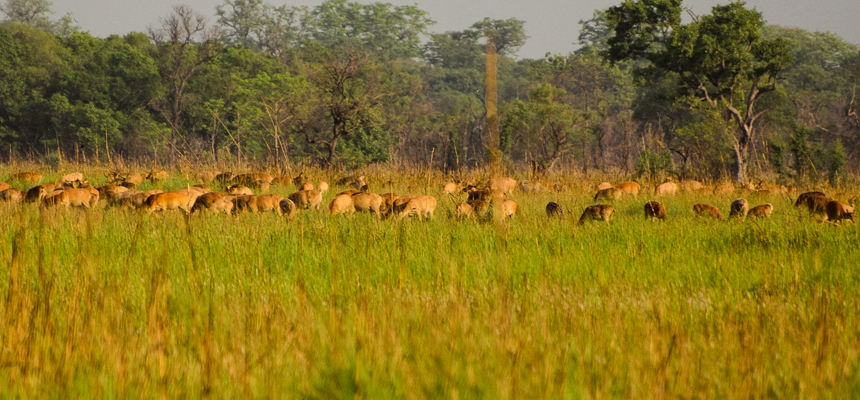Parsa Wildlife Reserve is situated in the lowland Terai of Nepal adjoining Chitwan National Park in the west. The 499 sq. km of pristine sub-tropical jungle makes Parsa Nepal’s largest wildlife reserve. This area once served as a vacation site for the Rana Rulers of the country. In 1984, it was gazette as a wildlife reserve to preserve the habitat for wild Asian elephant, and a variety of other fauna- It is contiguous with Chitwan National Park in the west.
The reserve has a sub-tropical monsoon climate. The dominant landscape of the reserve is the Churiya hills ranging from 750m to 950m, east to west. In the Churiya hills, chir pine grows along the rivers and streams. Sabai grass, a commercially important species, grows well along the southern face of the Churiya hills. The forests of the reserve consist of tropical and subtropical vegetation with sal trees comprising 90% of it. Other trees found are khair, sissoo and the silk cotton tree.
The reserve supports a good population of the wild elephant, tiger, leopard, sloth bear, gaur, blue bull and wild dog. Other common animals are sambar deer, chital deer, hog deer, barking deer, langur monkey, striped hyena, ratel, palm civet and jungle cat. Many species of snakes are found in the reserve due to its tropical climate. The species include king cobra, common cobra, krait, rat snake and the python. There are about 300 species of birds found in the reserve. Some of the common ones include giant hornbill, peafowl, red jungle fowl, flycatchers and woodpeckers.


Comments